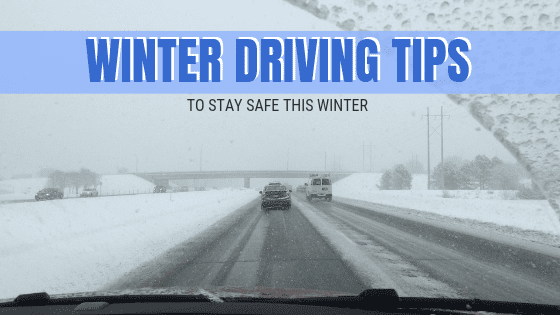Winter Driving Tips

Whether you’re going a long distance out of town, or just trying to drive through rough weather conditions on local road, here are 10 safe winter driving tips.
Check weather and road conditions often
When you’re about to drive and aren’t sure of the road conditions or predicted weather, check the weather station, road updates, and listen to the radio for announcements.
Choose your driving route you’ll take ahead of time and check the weather to make sure you know what to expect before you come across it while driving.
To check road conditions in Ontario go to www.ontario.ca/511.
Keep a safe distance behind snow plows
If you find yourself behind a snow plow, maintain a safe distance.
Snow plow drivers do not always have the best visibility which means they can’t see you either. They can also blow up snow and can reduce your visibility as well.

When it’s snowing excessively especially, it’s not a great idea to pass a snow plow- they’re out there for a reason.
Create a ‘survival kit’
This is especially important for long road trips, but can come in handy in bad weather situations.
Your survival kit should include items such as:
- gloves
- blankets
- booster cables
- small shovel
- windshield wiper fluid
- first aid kit
- snow brush
- candles and lighter
- safety vest
- water bottles (insulated is best since regular plastic bottles will freeze)
- non-perishable energy foods
Put the kit in the trunk of your car so you have handy in case of an emergency.
Use winter tires
If you don’t already have snow tires on, they are always a good idea. Winter tires give you better traction when driving, as well as better handling and braking.
All-season tires are okay, but are not the same as winter tires and may lose their grip when the temperature goes down.
Drivers with winter tires may also eligible for an insurance discount.
Slow down
In winter, always give yourself extra time so you can slow down and drive according to the road conditions around you. When driving long distances you might be using a GPS, but add on extra time to give yourself a window to proceed with caution.
Clean your vehicle
Before driving, take the time to clean all your windows, mirrors, lights and the roof. This is not only to give you better driving visibility, but is also safer for the other drivers on the road. A chunk of ice or snow falling from your vehicle might not affect you, but it will affect a vehicle driving behind you.

Warm your vehicle up ahead of time and wait for any foggy/icy windows to clear up too.
Keep a full gas tank
Not only is this better for your vehicle in winter, but if you’re driving a small vehicle, it can help by adding extra weight to your vehicle to slow it down and make it easier to drive in high winds and snow drifts.
The last thing you want when you’re driving in cold winter nights is to run out of gas!
Have a fully-charged cell phone
In case of an emergency, having a full-charged cell phone is a great thing to have available to you. One way to keep your phone fully charged (and keep yourself safe) is to not use it while you’re driving.
Avoid using cruise control
One thing to avoid during winter, especially when road conditions are slippery, is cruise control.
When you’re driving and your wheels lose traction, cruise control could cause your vehicle to continue to accelerate, and possibly cause an accident. Read more about avoiding cruise control in winter.
Use common sense
If the road conditions are bad or it’s storming outside, avoid driving anywhere if you can. This might not always be the case, but if you can avoid driving unnecessarily during winter, it can help save you from an unnecessary accident. Leave plenty of space behind vehicles you are following, don’t text and drive, and of course, don’t drink and drive.
The most important part of winter driving is to drive safe, and keep the roads safe for everyone.
